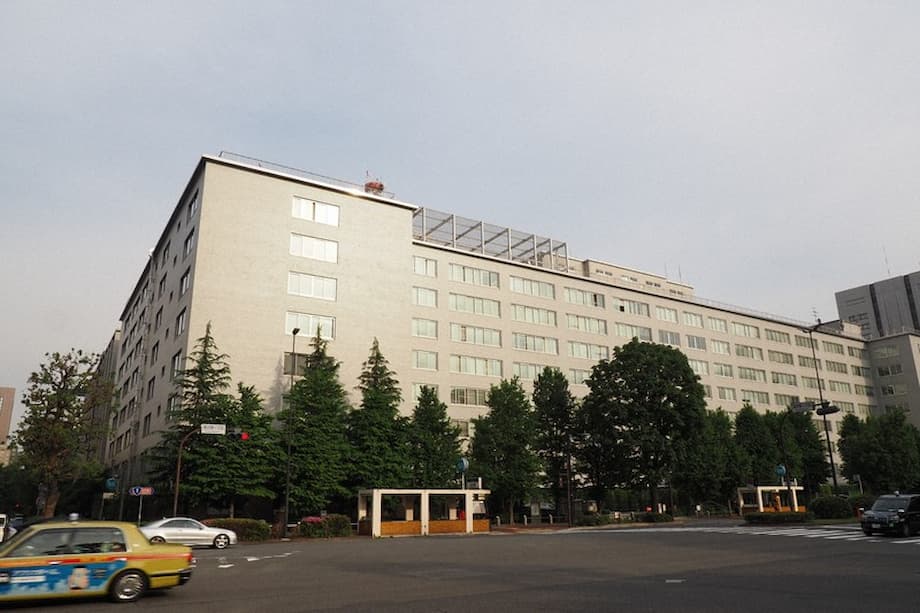Japan’s Rice Price Surge: What’s Really Driving the Crisis?
Japan, a nation where rice is more than just a staple food but a symbol of culture and security, has been rocked by a dramatic surge in rice prices over the past year. Despite government interventions and emergency releases from national stockpiles, supermarket shelves have seen prices for five-kilogram bags of rice soar to record highs, sometimes doubling compared to the previous year. The Ministry of Agriculture, Forestry and Fisheries (MAFF) recently concluded a series of comprehensive surveys, finding no evidence of a distribution bottleneck—contradicting earlier assumptions. Instead, the crisis reveals a complex web of supply-demand imbalances, policy shortcomings, and shifting market dynamics that have left consumers and policymakers scrambling for answers.
- Japan’s Rice Price Surge: What’s Really Driving the Crisis?
- How Did Rice Prices in Japan Double?
- What Did the Ministry’s Surveys Reveal?
- Beyond Distribution: The Real Causes of the Rice Crisis
- Economic and Social Impact: Inflation, Politics, and Food Security
- Policy Flaws and the Path Forward
- Broader Implications: Food Security and Rural Sustainability
- In Summary
How Did Rice Prices in Japan Double?
The roots of Japan’s rice price crisis stretch back to the summer of 2023, when an extreme heatwave led to a poor harvest and lower-quality rice. This initial shock was compounded by a series of events: panic buying triggered by earthquake warnings, a surge in demand from foreign tourists as pandemic restrictions eased, and speculation in newly opened rice futures markets. By early 2024, producers and businesses, anticipating shortages, began stockpiling rice, further tightening supply. The result was a 400,000 metric ton shortfall by August 2024, with stocks from the 2024 harvest sold out two months ahead of schedule.
Wholesale prices jumped 41% in September 2024 alone, and by May 2025, rice prices had more than doubled year-on-year—marking the largest increase in over half a century. According to government data, the average retail price for a five-kilogram bag of rice exceeded 4,000 yen (about $27), with premium brands like Koshihikari reaching as high as 5,000 yen ($35). Even as the 2025 harvest began to reach stores, prices remained stubbornly high, with early crops selling for 4,190 yen per 5 kg—up 1,400 yen from the previous year.
Why Didn’t Government Interventions Work?
In response to the crisis, the Japanese government took the unprecedented step of releasing hundreds of thousands of tons of rice from its emergency reserves. Traditionally, such releases were reserved for natural disasters or crop failures, but in early 2025, the government justified intervention by citing distribution problems and surging prices. However, these measures failed to bring prices down to the government’s target of below 4,000 yen per 5 kg. Only government stockpiled rice, often older and considered less tasty, was available at discounted prices, while branded rice remained expensive.
Farm Minister Shinjiro Koizumi, appointed after his predecessor’s controversial remarks, accelerated the release of reserve rice and allowed direct sales to retailers at lower prices. Despite these efforts, the impact was limited. As one supermarket official explained, “There is strong demand for domestic brands, and even with more imported rice on sale, prices for Japanese rice remain high.”
What Did the Ministry’s Surveys Reveal?
To get to the bottom of the crisis, MAFF conducted six nationwide surveys, examining rice shipments, sales, inventories, and milling yields across 70,000 businesses. The findings were surprising: inventory levels at agricultural cooperatives, retailers, and food service businesses were similar to previous years. Wholesalers actually held 100,000 metric tons more rice than in 2024, thanks in part to the influx of government reserve rice. The discounted government rice, released in large quantities starting in May, helped reduce excess inventory but did not lower branded rice prices.
Crucially, the surveys found no evidence of a distribution bottleneck—contradicting earlier government claims that wholesalers were hoarding rice and causing shortages. Instead, the ministry concluded that demand for rice had exceeded expectations, disrupting the supply-demand balance. High temperatures also reduced the milling yield of brown rice, requiring more raw rice to produce the same amount of polished rice, further tightening supply.
The ministry reported to its food subcommittee: “The causal relationship between inventory hoarding and price surges appears weak. It is necessary to revise the supply-demand outlook for rice.”
As a result, MAFF postponed its annual demand forecast for staple rice, acknowledging the need for a more accurate assessment of market dynamics.
Beyond Distribution: The Real Causes of the Rice Crisis
While initial explanations focused on supply chain disruptions, deeper analysis points to a confluence of factors:
- Climate Change and Poor Harvests: The 2023 heatwave led to lower yields and poorer quality rice, reducing the amount of marketable grain.
- Surging Demand: Recovery in the food service sector, record inbound tourism, and panic buying all contributed to higher consumption. The population of foreign residents, many from rice-eating cultures, grew by over 340,000 in 2024.
- Market Speculation: The opening of a rice futures market in 2024 allowed for speculative trading, amplifying price swings and fueling consumer anxiety.
- Policy Rigidities: Japan’s rice production system, shaped by decades of government control and subsidies, lacks flexibility. Policies incentivize farmers to grow rice for animal feed rather than for human consumption, even when eating rice is in short supply.
- Distribution Channel Diversification: More rice is now sold through direct sales and alternative channels, often at higher prices, reducing the influence of traditional cooperatives and making price stabilization harder.
How Did Sales Channel Changes Affect Prices?
Traditionally, most rice was sold through major buyers like the National Federation of Agricultural Cooperative Associations (Zen-Noh). However, the ministry’s survey found that in 2024, shipments to these major buyers fell by 340,000 metric tons, while direct sales and transactions with other traders increased by 490,000 tons. This shift meant more rice was sold at higher transaction prices, contributing to the overall price surge.
Major wholesalers, able to pass on higher procurement costs to consumers, maintained their inventories and even posted record profits. Meanwhile, agricultural cooperatives (JA) struggled to secure enough rice, as more farmers opted to sell directly to buyers offering better prices. This competition for rice intensified the shortage and pushed prices even higher.
Economic and Social Impact: Inflation, Politics, and Food Security
The rice price crisis has had far-reaching consequences for Japanese society and the economy. In May 2025, Japan’s core inflation rate hit 3.7%, its highest level since January 2023. Rice alone accounted for about half of the increase in core inflation, straining household budgets and reducing disposable income for other spending. The crisis became a major political issue, with approval ratings for Prime Minister Shigeru Ishiba’s cabinet dropping to 27.4% as voters expressed frustration over rising food costs.
For many Japanese, rice is not just food—it is a matter of national identity and security. As The Diplomat noted, “The rice price crisis is a reminder that without food security, nothing else is safe.” The government’s reluctance to import more rice, due to high tariffs and cultural preferences for domestic varieties, has limited its ability to stabilize prices quickly.
Imported Rice and Changing Consumer Habits
With domestic rice prices soaring, some consumers and restaurants have turned to imported rice from the United States and South Korea. For the first time since 1999, South Korean rice was exported to Japan, and major supermarket chains began selling California-sourced rice. However, imported rice faces both tariff barriers and consumer skepticism about taste and quality. Despite these challenges, the presence of imported rice has helped ease shortages in some areas, though prices remain high overall.
Policy Flaws and the Path Forward
Experts argue that Japan’s rice crisis exposes deeper flaws in agricultural policy. For decades, the government has sought to balance supply and demand through production controls, subsidies, and stockpiling. While these measures once prevented overproduction, they have also created rigidities that hinder rapid market adjustment in times of crisis.
One major issue is the incentive structure for farmers. Subsidies encourage the production of rice for animal feed, which is sold at lower prices, even though some of this rice is suitable for human consumption. If more of this rice were redirected to the table, supply could exceed demand, potentially lowering prices. However, policy and market structures make such adjustments difficult.
As East Asia Forum analysts observed: “The core issue is not insufficient rice production but inflexible production systems and missing market mechanisms. A market-friendly approach would provide a more sustainable solution than ad-hoc government interventions.”
Another challenge is the lack of a robust rice product market in Japan. The new rice index futures market allows for speculation without actual rice trades, which can destabilize prices rather than smooth them. Policymakers are now considering reforms to make the rice market more responsive and transparent.
Will Prices Stabilize?
There are signs that the worst of the crisis may be easing. By June 2025, average rice prices had dropped below 4,000 yen per 5 kg for the first time in two months, and supermarket shelves were being restocked. However, prices remain elevated compared to previous years, and volatility persists. The government’s release of reserve rice and increased imports have helped, but structural issues remain unresolved.
Looking ahead, forecasts suggest that rice prices could rise by another 8% in 2025, depending on weather, government interventions, and market reforms. The outlook is for continued volatility, with the potential for either stabilization or renewed price spikes if another poor harvest or natural disaster occurs.
Broader Implications: Food Security and Rural Sustainability
The rice crisis has reignited debates about food security, rural sustainability, and the future of Japanese agriculture. With an aging farming population and declining rural communities, Japan faces long-term challenges in maintaining stable domestic rice production. Technology, such as satellite crop monitoring and AI-driven advisory tools, is being deployed to support sustainable farming and manage market risks.
At the same time, changing consumer habits—especially among younger generations who eat less rice—are reshaping demand. Rice consumption in Japan has declined by 40% since 1962, and some consumers are substituting rice with other foods or accepting imported varieties. The choices farmers make about where and how to sell their rice in 2025 could mark a turning point in the history of Japanese agriculture, with implications for both market structure and national food security.
In Summary
- Japan’s rice price surge was not caused by a distribution bottleneck, but by a combination of poor harvests, surging demand, market speculation, and policy rigidities.
- Government interventions, including the release of emergency rice reserves, helped ease shortages but failed to bring branded rice prices down to target levels.
- Surveys found that inventory levels were normal, but more rice was sold through direct and alternative channels at higher prices, reducing the influence of traditional cooperatives.
- The crisis has driven inflation, strained household budgets, and become a major political issue, highlighting the importance of rice for national identity and security.
- Imported rice and government stockpiles have helped stabilize the market, but structural reforms are needed to make the rice system more flexible and resilient.
- Looking forward, Japan faces ongoing challenges in balancing food security, rural sustainability, and market stability in the face of climate change and demographic shifts.




